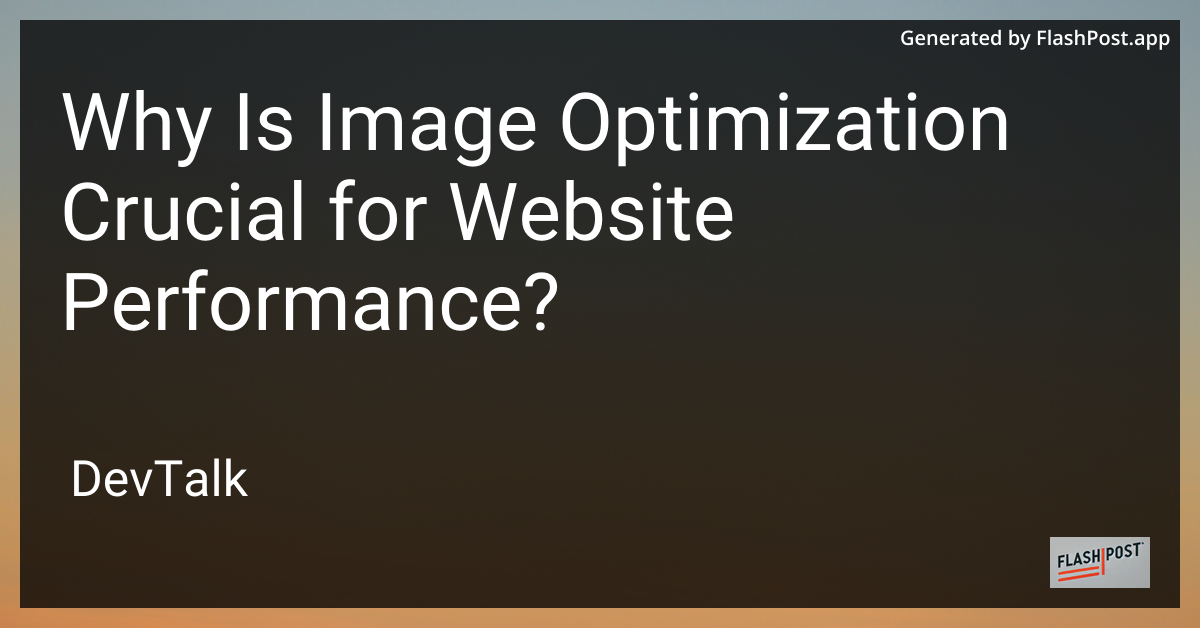Why Is Image Optimization Crucial for Website Performance?
 # Why Image Optimization is Crucial for Website Performance
# Why Image Optimization is Crucial for Website Performance
In the digital age, where website speed and efficiency are paramount to user experience and conversion rates, image optimization plays a critical role in enhancing website performance.
Whether you're managing a WordPress website, an e-commerce site, or a Drupal platform, optimizing images is essential for maintaining competitiveness and ensuring a seamless user interface.
What is Image Optimization?
Image optimization involves compressing and resizing images to reduce their file size without compromising on quality. This process aims to deliver the best quality images while reducing the resource load on the server and minimizing download times for users.
Benefits of Image Optimization
1. Faster Loading Times
Large, unoptimized images can significantly slow down a website. Faster loading times enhance user experience, reduce bounce rates, and improve overall site engagement.
2. Improved SEO Ranking
Search engines, like Google, prioritize fast-loading websites. By optimizing images, you can improve your website's load times, contributing to a better SEO ranking and increased visibility in search engines.
3. Enhanced User Experience
User experience is crucial to the success of any website. Optimized images contribute to quicker load times and a smoother browsing experience, keeping visitors engaged and more likely to convert.
4. Reduced Bandwidth Costs
Optimized images reduce the bandwidth used by your site, leading to cost savings, especially beneficial for websites with a high volume of traffic.
5. Better Mobile Performance
With the increasing use of mobile devices to browse the web, ensuring that images load quickly on all devices is crucial. Optimized images improve performance across different devices and screen sizes.
Tools for Image Optimization
Numerous tools help in efficiently optimizing images. These include standalone applications, plugins, and online platforms that support various file formats and optimization techniques.
- TinyPNG and TinyJPG: These tools compress PNG and JPEG images significantly while maintaining quality.
- ImageOptim: A popular choice for Mac users, ImageOptim is excellent for reducing file sizes effectively.
- WP Smush: A popular WordPress plugin that automatically optimizes images as you upload them to your site.
Integrating Image Optimization in Your Web Strategy
As you work towards an optimized website, image optimization should be a foundational aspect of your strategy. It's an essential step that complements other optimization efforts, such as URL shortening and A/B testing analysis.
Incorporating optimized images assures not only improved site performance but also enhances visitor retention and engagement rates. For broader website optimization tactics, exploring guides like website optimization and specialized platforms like e-commerce and Drupal are beneficial.
Conclusion
Image optimization is not just a technical best practice; it's a crucial element for competitive advantage in the digital landscape. By seamlessly integrating image optimization into your website management process, you enhance performance, improve search engine rankings, and provide an optimal user experience.
Remember, a lean website is a mean website—it's time to make those images work smarter, not harder. Dive into comprehensive website optimization strategies to harness the full potential of your website's performance.